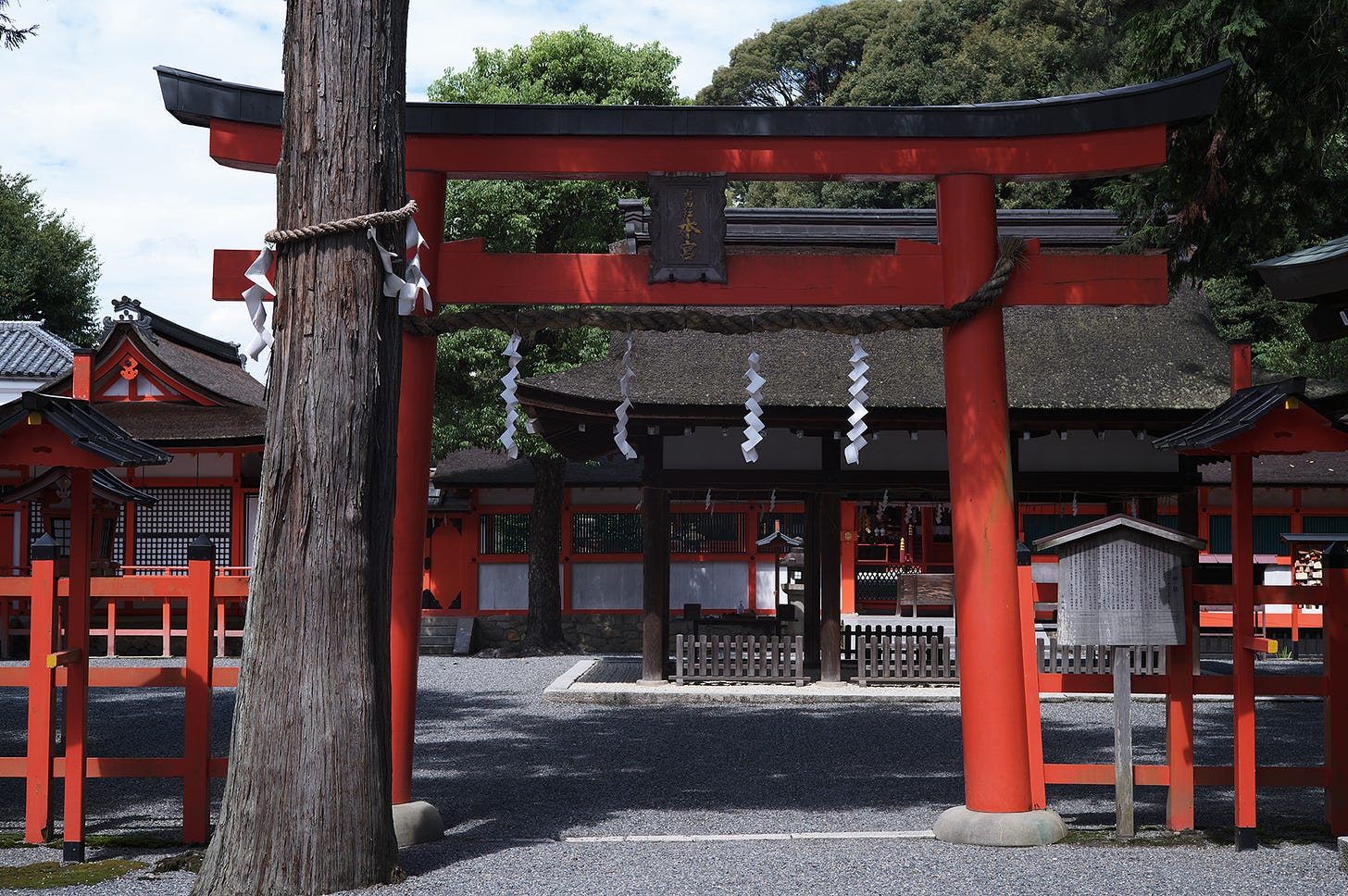Buddhism’s Suppression and the Emergence of Restoration Shinto
Kokugaku vs. Buddhism and the Struggle for Japan’s Spiritual Identity
In the previous article, we discussed how, sparked by the Meiji Restoration, Shinto developed—for the first time in its history—into a religion supported on a national scale. This triggered a thorough suppression of Buddhism during the early Meiji period. In this article, we will delve into the historical background of that suppression.
Although one can say Buddhism went into decline during the Edo period, this “decline” actually signifies the end of the medieval era of expansive Buddhist proselytizing, leading to an era where the Japanese people fully incorporated Buddhism into their daily customs without any resistance. Notably, the Tokugawa shogunate, aiming to strengthen its centralized authority over the entire country, leveraged Buddhism to clamp down on a certain religion—namely, Christianity (referred to as Kirishitan in Japanese sources).
When it came to banning the spread of Christianity, Buddhism—having a well-developed organizational structure—proved more convenient for the shogunate than Shinto, which lacked such a robust religious framework at the time. This is crucial to understanding the Edo period: Shinto was effectively in a subordinate position to Buddhism. This dynamic of subordination provoked dissatisfaction among Shinto priests, which later contributed to their active participation in the anti-Buddhist movements of the modern era.
In practical terms, almost everything fell under the jurisdiction of Buddhist temples. Even Shinto priests were generally required to have Buddhist funerals. At the same time, however, the Edo period did offer a degree of freedom of expression—an area into which the shogunate did not typically intervene.
Because of this, although many religious customs presupposed Buddhism, scholars could still freely criticize Buddhism in writing or speech. On the other hand, if Shinto priests or scholars actually acted in defiance of Buddhism, severe punishment was imposed immediately. Understanding this delicate balance is key. It also highlights that a unified nation-state, in the modern sense, simply did not exist during the Edo period.
**Power was not concentrated solely in the shogunate; the various domains (han) held significant autonomy. If a domain lord happened to favor Shinto, it is believed that such restrictive measures against Shinto priests might not have been enforced.
Throughout the Edo period, Shinto priests repeatedly spoke out against Buddhism, leading to many priests being exiled, executed, or stripped of their familial shrine lineages. Through these struggles, the sentiment that Shinto and Buddhism were inherently distinct gathered momentum, fueling resistance against a government that had embraced Buddhism. Aligned with the mounting anti-Buddhist sentiment among Shinto priests, a new field of scholarship known as Kokugaku (National Learning) emerged, which provided theoretical justification for such attitudes.
Kokugaku scholars, who actively sought to assert and celebrate the uniqueness of Japanese culture, regarded Buddhism—transmitted to Japan through China—as fundamentally the same as Christianity, which had arrived via Europe and was outlawed by the shogunate. They accordingly demanded the thorough expulsion of Buddhism from Japan. In this movement, Shinto became their spiritual mainstay.
This climate gave rise to the concept of “Shinbutsu Bunri” (the separation of kami and buddhas), but for a long time, it was exceedingly difficult to move forward with such a separation. While it was relatively easy to banish Christianity, which had arrived only recently, Buddhism had by then been in Japan for over a thousand years and was historically deeply intertwined with Shinto in a phenomenon known as “Shinbutsu Shūgō” (the fusion of kami and buddhas).
This meant that Shinto priests and Kokugaku scholars seeking to “recover pure Shinto” had an extremely difficult task separating out Buddhist influences, which had become heavily intermingled with Shinto over centuries. Moreover, at that time Buddhism enjoyed incomparable wealth and far more adherents than Shinto.
Starting in the latter half of the 18th century, calls for a revival of Shinto, inspired by Kokugaku teachings, began to surface. Leading this charge was the Kokugaku scholar Motoori Norinaga (1730–1801). Under the influence of his ideas, Shinto underwent a pronounced “Restorationist” phase in the early 19th century, with the emergence of Fukko Shinto (Restoration Shinto). This movement was championed by Hirata Atsutane (1776–1843), a Confucian scholar turned Kokugaku devotee who was strongly influenced by Motoori.
During this period, Shinto was broadly divided into two major factions, both of which had the shogunate’s approval. If you wanted to establish a new shrine, you had to obtain authorization from one of these factions; founding a shrine on your own was forbidden. These two lineages were the Yoshida family (Yoshida Shinto) and the Shirakawa family (Hakke Shinto), both based not in Edo (the political center) but in Kyoto.
As long as these two powerful factions remained divided, they had little hope of resisting the overwhelming power of Buddhism. Seeking to unify Shinto, Hirata began actively promoting Kokugaku. Under his enormous influence, the two factions eventually merged. In other words, the reality behind “Fukko Shinto” (Restoration Shinto) was essentially Hirata Atsutane’s brand of Shinto.
Hirata’s ideas were profoundly influential at the time, shaping the views of many disciples. Through these disciples, modern Shinto came into being.
In the previous article, we noted how the new Meiji government immediately introduced policies to suppress Buddhism, spearheaded by Iwakura Tomomi. Behind Iwakura stood Tamamatsu Misao, and we now learn that Tamamatsu was a disciple of the eminent Kokugaku scholar and Shinto priest Ōkuni Takamasa (1793–1871)—himself an exceptionally talented pupil of Hirata Atsutane.



